
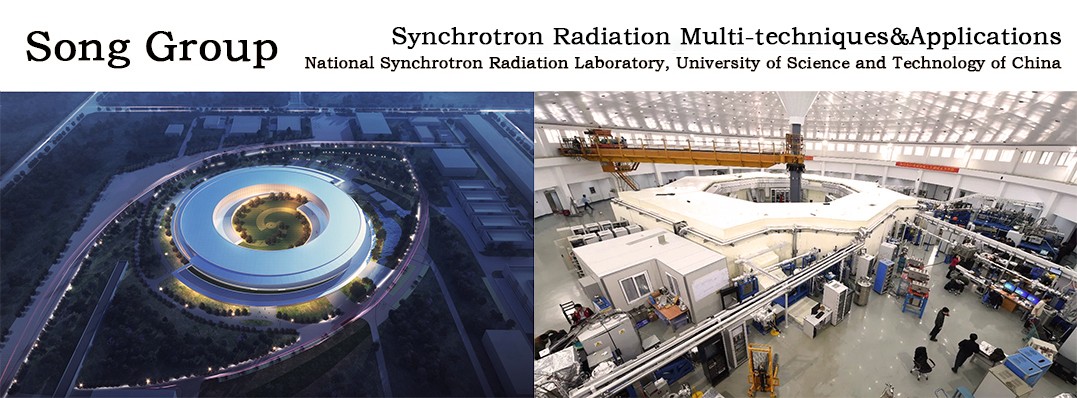
Electrocatalysis
The intermittency of energy supply from renewable and clean resources, such as solar, wind, geothermy, etc, has largely hampered the economic development and reduced the efficiency of energy utilization. Conversing these intermittent and localized energies into energy-dense molecules via electrocatalysis is regarded as a promising pathway to mitigate the intermittency problem. Among a series of electrochemical conversion reactions, water splitting and carbon dioxide reduction can produce clean hydrogen and reduce carbon dioxide emission respectively, therefore drawing a lot of attention from researchers. So far, precious metals are still the most active ones to catalyze the electrochemical conversion of reactants. One research interest of our group is to rationally design efficient non-precious catalysts or largely reduce the usage of precious metals while keeping or even improving the activity of catalysts.
At the lab scale, our group focus on the 3d-5d transition metal based catalysts, including their hydroxides, oxides, phosphides and sulfides. Some single-atom catalysts-related researches are also in the spotlight. These catalysts would be utilized for oxygen evolution reaction (OER), hydrogen evolution reaction (HER), CO2 reduction reaction (CO2RR), and etc.
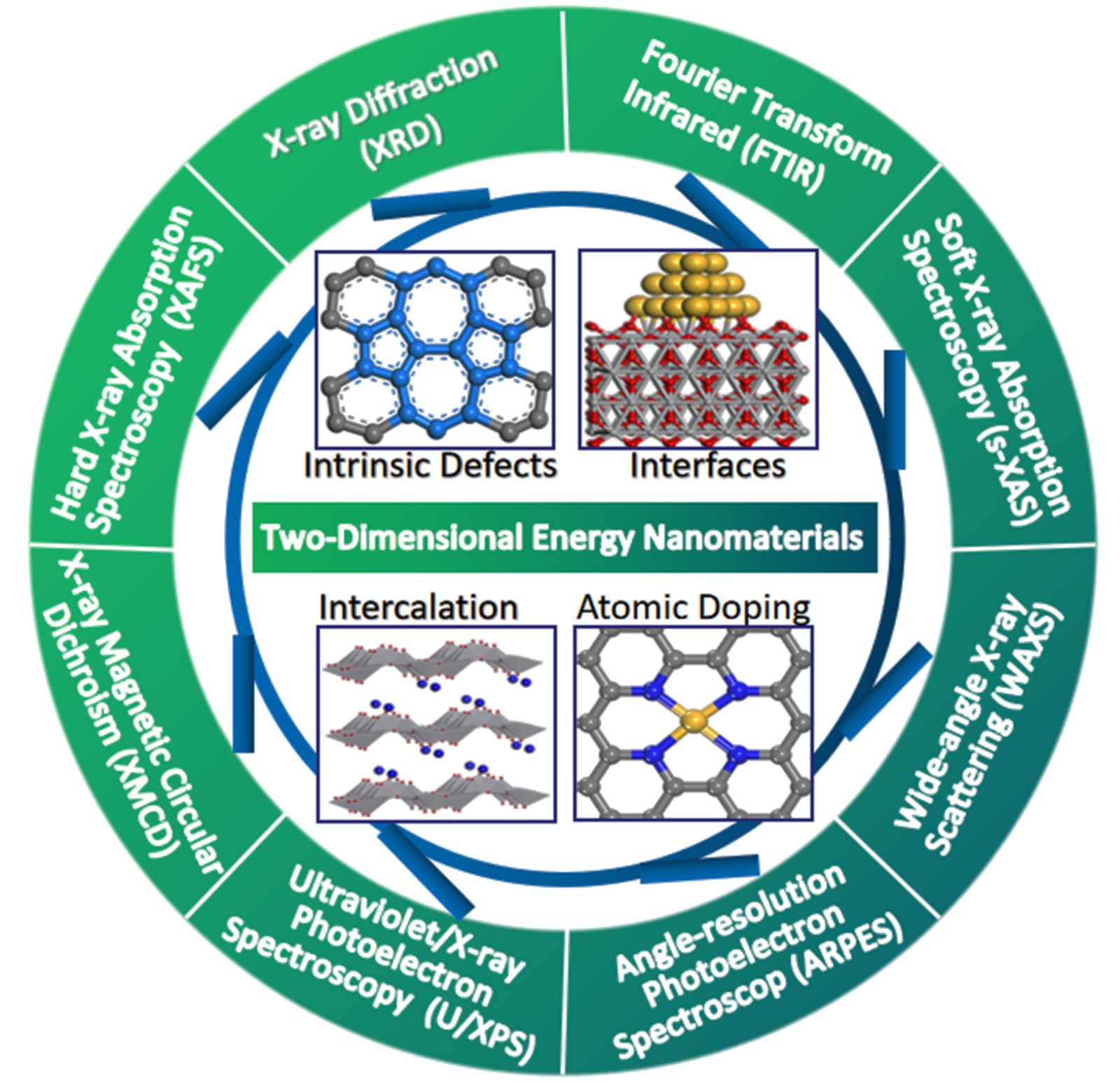
The schematic diagram of our research interests
Recent publications:
1. Daobin Liu, Xiyu Li, Shuangming Chen, Huan Yan, Changda Wang, Chuanqiang Wu, Yasir A. Haleem, Sai Duan, Junling Lu, Binghui Ge, Pulickel M. Ajayan, Yi Luo, Jun Jiang*, Li Song*. Atomically dispersed platinum supported on curved carbon supports for efficient electrocatalytic hydrogen evolution. Nature Energy 2019, 4, 512-518.
2. Qun He, Dong Tian, Hongliang Jiang, Dengfeng Cao, Shiqiang Wei, Daobin Liu, Pin Song, Yue Lin, Li Song*. Achieving efficient alkaline hydrogen evolution reaction over a Ni5P4 catalyst incorporating single-atomic Ru sites. Advanced Materials 2020, 32, 1906972.
3. Dengfeng Cao, Daobin Liu, Shuangming Chen, Oyawale Adetunji Moses, Xingjia Chen, Wenjie Xu, Chuanqiang Wu, Lirong Zheng, Shengqi Chu, Hongliang Jiang, Changda Wang, Binghui Ge, Xiaojun Wu, Jing Zhang, Li Song*. Operando X-ray spectroscopy visualizing the chameleon-like structural reconstruction on an oxygen evolution electrocatalyst. Energy & Environmental Science 2021, 14, 906-915.
4. Qun He, Yuzhu Zhou, Hongwei Shou, Xinyu Wang, Pengjun Zhang, Wenjie Xu, Sicong Qiao, Chuanqiang Wu, Hengjie Liu, Daobin Liu, Shuangming Chen, Ran Long, Zeming Qi, Xiaojun Wu, Li Song*. Synergic reaction kinetics over adjacent ruthenium sites for superb hydrogen generation in alkaline media. Advanced Materials 2022, 34, 2110604.
5. Yuzhu Zhou, Quan Zhou, Hengjie Liu, Wenjie Xu, Zhouxin Wang, Sicong Qiao, Honghe Ding, Dongliang Chen, Junfa Zhu, Zeming Qi, Xiaojun Wu, Qun He*, Li Song*. Asymmetric dinitrogen-coordinated nickel single-atomic sites for efficient CO2 electroreduction. Nature Communications 2023, 14, 3776.
6. Qun He, Beibei Sheng, Kefu Zhu, Yuzhu Zhou, Sicong Qiao, Zhouxin Wang, Li Song*. Phase Engineering and Synchrotron-Based Study on Two-Dimensional Energy Nanomaterials. Chemical Reviews 2023, doi: 10.1021/acs.chemrev.3c00389
Energy storage system
The development of electrochemical energy storage materials and the study of energy storage mechanism are very important for the sustainable development of new energy. Our research group focused on a variety of electrochemical energy storage devices such as Li+, Na+ battery; aqueous Zn2+ battery and supercapacitors, etc. We study on the design and development of two-dimensional electrode materials (transition metal sulfides, oxides and carbides, etc.) with promising energy storage performance. The structure of electrode materials was deeply studied by means of various synchrotron radiation spectroscopy (XAFS, XPS, XRD, etc.), and the energy storage mechanism was explored by ex/in situ XAFS, ex/in situ XRD and other characterization methods (ex/in situ Raman, etc.).
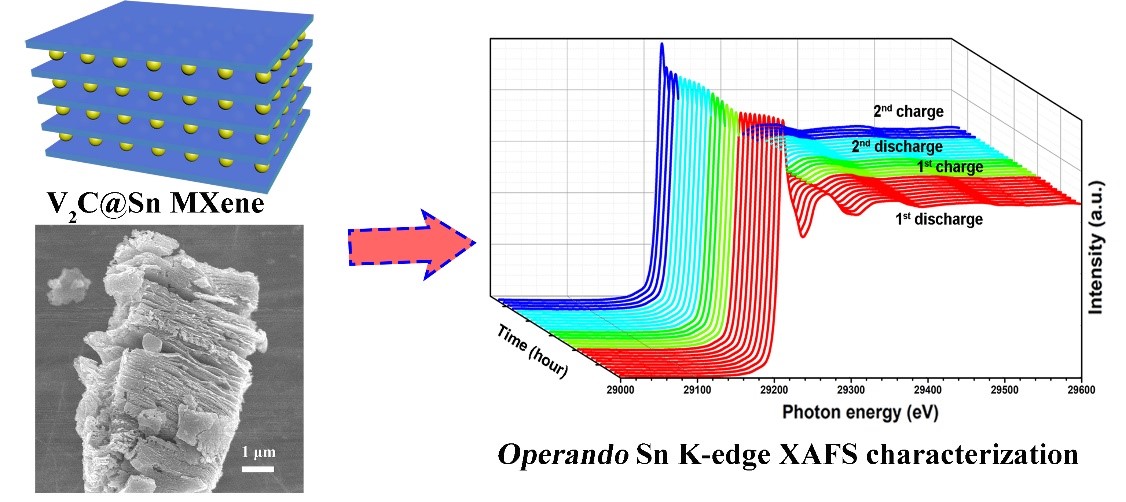
Adv. Energy. Mater. 9, 1802977, (2019).
Recent publications:
1. Wang, C., Chen, S. & Song, L. Tuning 2D MXenes by Surface Controlling and Interlayer Engineering: Methods, Properties, and Synchrotron Radiation Characterizations. Adv. Funct. Mater., 2000869, (2020).
2. Wei, S. et al. Dial the Mechanism Switch of VN from Conversion to Intercalation toward Long Cycling Sodium‐Ion Battery. Adv. Energy. Mater., 1903712, (2020).
3. Wang, C., Wei, S., Chen, S., Cao, D. & Song, L. Delaminating Vanadium Carbides for Zinc‐Ion Storage: Hydrate Precipitation and H+/Zn2+ Co‐Action Mechanism. Small Methods 3, 1900495, (2019).
4. Wang, C. et al. Atomic Cobalt Covalently Engineered Interlayers for Superior Lithium-Ion Storage. Adv. Mater. 30, e1802525, (2018).
Synthesis and device application
Two-dimensional quantum materials, including graphene, h-BN, TMDCs, MXenes, etc., have shown abundance of exotic physical properties and are expected to be applied in electronics and photoelectronic devices with ultra-low power. The exploration of new materials is of importance to physical property engineering and device applications. By combination of theoretical calculations and predictions, we use a variety of growth means including CVD and CVT method to obtain high quality 2D materials, with the help of synchrotron radiation X-Ray absorption spectroscopy (XAS) and synchrotron radiation angular resolution photoelectron spectroscopy (ARPES) and other advanced characterization methods, we explore the basic physical properties of materials such as optical, electrical and magnetic properties. For 2D materials showing application potential, we further design and construct on-chip devices for optoelectronic response or electrocatalysis.
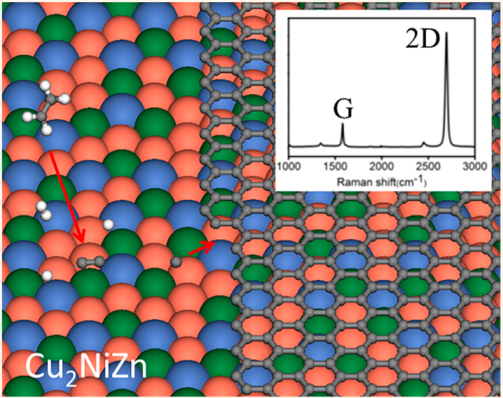
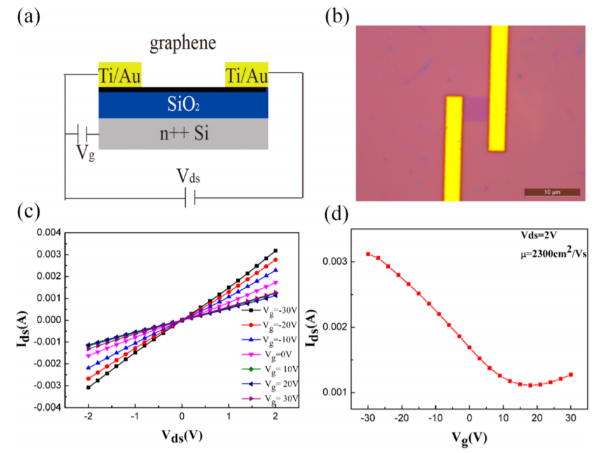
ACS Nano 2017, 11, 1371−1379
Recent publications:
1. Guo, He, et al. "Ternary MoSe2xTe2−2x alloy with tunable band gap for electronic and optoelectronic transistors." Nanotechnology 2020, 31, 345704
2. Rehman, Zia Ur, et al. "Band structure tailoring in ZrSe2 single crystal via trace rhenium intercalation." Applied Physics Letters 2019, 115, 213102
3. Zhu, Wen, et al. "Exfoliation of ultrathin FePS3 layers as a promising electrocatalyst for the oxygen evolution reaction." Chemical Communications 2018, 54(35): 4481-4484.
4. Gan, Wei, et al. "A Ternary Alloy Substrate to Synthesize Monolayer Graphene with Liquid Carbon Precursor." ACS Nano 2017,11, 1371-1379.
